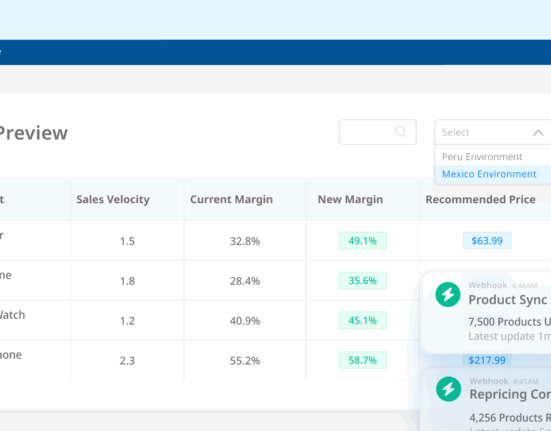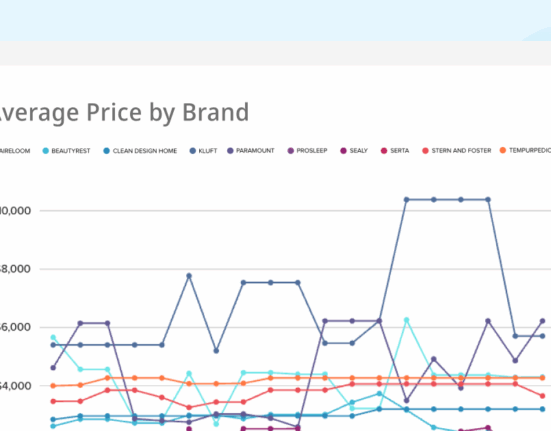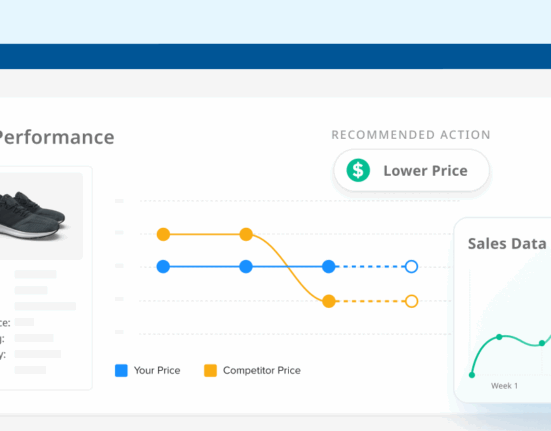What is dynamic pricing?
Simply put, dynamic pricing is a flexible strategy to price your products based on a variety of factors, including market demands, price bounds, and seasonality. A good dynamic pricing strategy allows you to reprice quickly and at scale, all while understanding the effects of your changes.
Perhaps this definition seems like a simple way to start a discussion of the relevance of dynamic pricing for your online retail business. Take a closer look. Keep that definition in mind. Like dynamic pricing itself, the definition is more complicated than it may at first appear.
The Effect of Dynamic Pricing on Profitability
A dynamic pricing strategy isn’t new. The basic idea of adjusting pricing to match demand is as old as pricing itself. In fact, pricing used to be based on haggling. A fixed price seemed more “fair” and it was certainly less time-consuming for retailers. Customers caught on to the idea and now expect fixed prices, especially in the retail market. But that’s changing.
Using a dynamic pricing algorithm enables retailers to capture the most revenues from their products.
Retail Prophet put it this way: “It enables a retailer to optimize their pricing based on real-time inputs, as opposed to setting a price over the long term and either pricing too low and giving up margin needlessly or charging too much and losing sales.”
It also ensures that the customers who value a product the most have the opportunity to purchase it.
Why Do Other Pricing Strategies Often Fall Short?
If you refuse to be dynamic, you’re left with two basic pricing strategies. You can set a static price based on your variable costs or price to achieve your desired profit margin.
These pricing strategies assume you will achieve the sales volume necessary for your desired profit margin to cover your fixed costs. You may find more brand manufacturers prefer a fixed-price strategy over a dynamic one. Most retailers, however, prefer fluctuating prices, because they allow them to have more control over sales volume.
Fluctuating prices are basically what dynamic pricing used to be. You compile market data, process the data, and then adjust prices as needed. This process can take weeks, especially if done manually. On the ground, your customers are all charged the same price while you capture and analyze data. Prices are still dynamic, but they’re slow and rather unresponsive in a rapidly changing market.
Either way, you’re talking about fixed prices. Remember JCPenny’s “Everyday Low Pricing”? It has demonstrated how well that works (hint: not well).
According to Scott Randel of iProspect, “With fixed pricing, businesses can be either missing out on profit or potential sales depending on consumers in the market.”
In other words, these pricing strategies can fall short because your customers are more dynamic than you are. They shop around. They look for better prices, better products, and better choices. If you’re not responding, then you’re losing them to competitors who will.
When Does Dynamic Pricing Not Work?
There are two big challenges when it comes to effectively implementing dynamic pricing.
Dynamic pricing does not equal price discrimination: selling the same product to two different buyers at different prices. An honest and trustworthy approach to dynamic pricing can avoid price discrimination, according to the Harvard Business Review.
After all, the objective of dynamic pricing isn’t to damage your customer relationships. Your purpose is to respond to your customers more individually.
The second problem is actually more difficult to solve on your own. Think back to our original definition of dynamic pricing. The premise of this definition is that you know the level of demand, the type of consumer, and other relevant market conditions and then update your strategy.
According to Retail Prophet, “Inputs such as demand and popularity for the product and competitor prices prompt real-time fluctuations in the listed price of an item.”
In other words, you need data in order to make your prices effectively dynamic. You need to select the data sets you use in a way that does not alienate your customers. You need to process this data in a way that makes it useful to you. And you need to use the information you glean from the data to change your prices in real-time.
What you need is a platform that can help you determine the variables, compile and process the data, and change your prices accordingly. What you need is a solution.
The objective of dynamic pricing isn’t to damage your customer relationships. Your purpose is to respond to your customers more individually.
How an Effective Dynamic Pricing Strategy Works
That solution is dynamic pricing backed by machine learning. For example, Wiser’s dynamic pricing platform uses competitive price intelligence to recommend new prices and reprice automatically.
Some data points considered are stock levels, consumer demand, and seasonality. The more SKUs repriced this way, the better the algorithm becomes at pricing your products. Data is continually collected to refine prices to best serve your business and your customers.
An effective dynamic pricing strategy uses competitive pricing intelligence and automates the process. The platform knows the important variables, has all the market data needed, and reprices your SKUs.
How to Implement Dynamic Pricing
We’ve defined dynamic pricing. We’ve explained how it is useful or not useful depending on your use case. So, how can you implement a strategy?
We recommend a simple framework to get started:
Choose Your SKUs
First, decide which SKUs you want to be repriced dynamically. Naturally, some of your products will be better suited for this pricing strategy. It could be an entire category, a specific type of product, your whole assortment, or another segment.
Set the Repricing Rule(s)
Next, select which repricing rules you want for these SKUs. There are many possible options at your disposal, so this is a great opportunity to test strategies or refine your approach for improved results.
Configure Price Bounds
Then, set price bounds on your chosen SKUs. This is a very important step. With dynamic pricing, the algorithm could set a new price that is lower or higher than your brand—or margins—is comfortable with. Price bounds prevent that. They’re just a minimum price and a maximum price for your rules.
Set Up a Schedule
Lastly, you can set a schedule for your price changes. Perhaps you only want to run dynamic pricing during a specific season or shopping event. Or, you want to test prices for a set time period and then review the results. Set the schedule, launch the strategy, and you’re off and running!
All in all, if you want to implement dynamic pricing on your own, make sure you’ve got the good pricing data to guide your decisions. Don’t reprice dynamically based on assumptions.
Editor’s Note: This post was originally published in November 2013 and has since been updated and refreshed for readability and accuracy.










